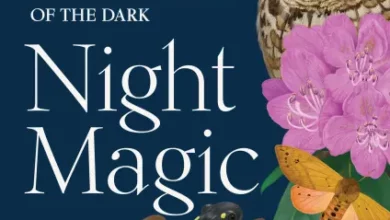Night shift: Lake County’s nocturnal neighbors
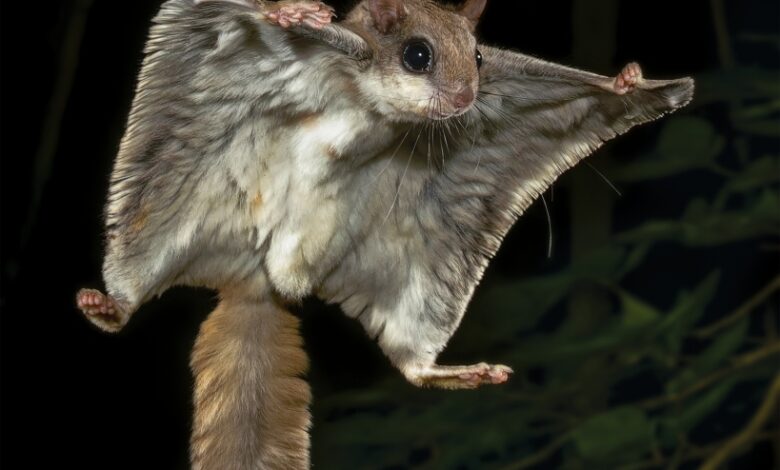
Post by Brett Peto
This article appears in the fall 2025 issue of Horizons, the award-winning quarterly magazine of the Lake County Forest Preserves in northern Illinois.
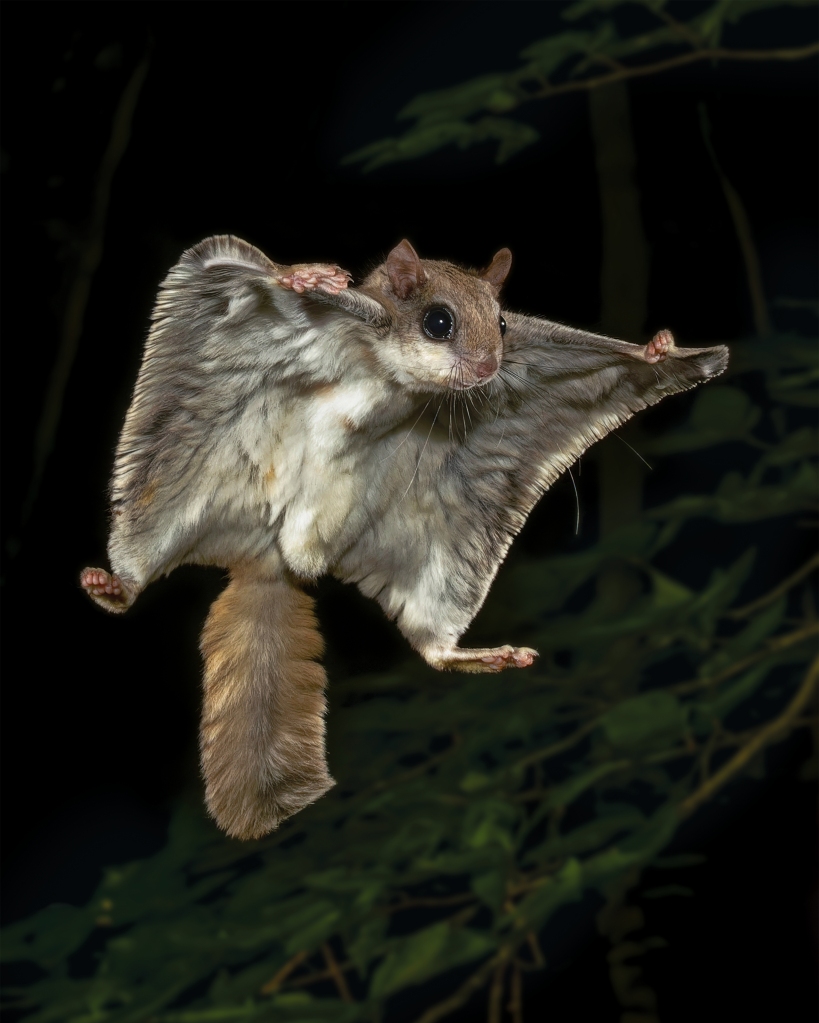
When you settle into bed for the evening, another world awakens. Flying squirrels launch between trees, bats emerge from roosts and owls begin their silent hunts.
Your forest preserves provide the food, water, shelter and darkness these animals need during their night shifts. Despite their abundance and proximity, our nocturnal neighbors can seem mysterious. The dark obscures their unique activities.
Let’s peek behind the curtain.

Nighttime Advantages
Darkness offers different advantages to different animals. It allows species with similar diets to avoid direct competition.
“Owls hunting at night generally target small mammals or birds. Hawks hunt the same prey during the day,” said Wildlife Ecologist Jim Grego. “They don’t directly compete.”
Amphibians such as frogs and salamanders emerge at night to dodge daytime heat and dehydration.
Blue-spotted and eastern tiger salamanders breathe through their skin and must remain damp.
They venture from burrows to hunt snails, earthworms and mosquitoes using their sense of smell.
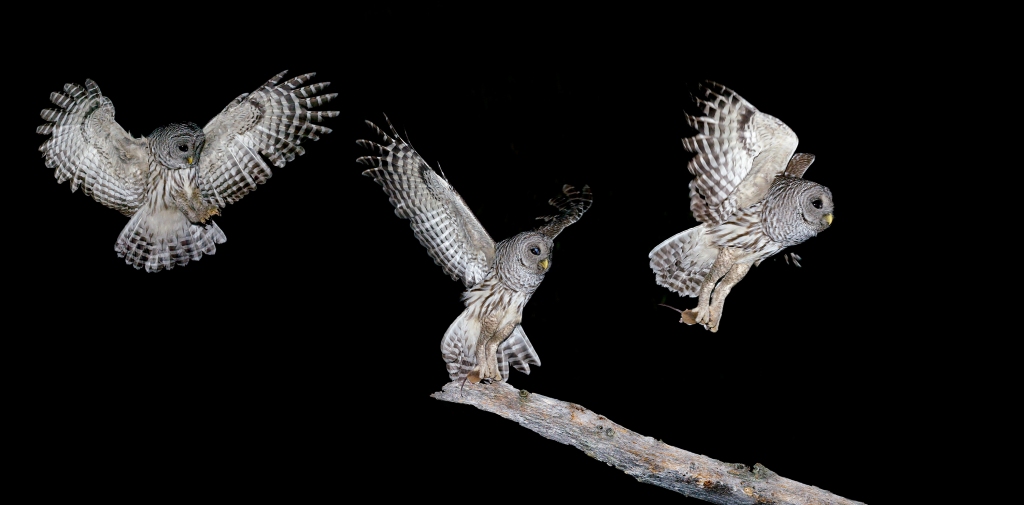
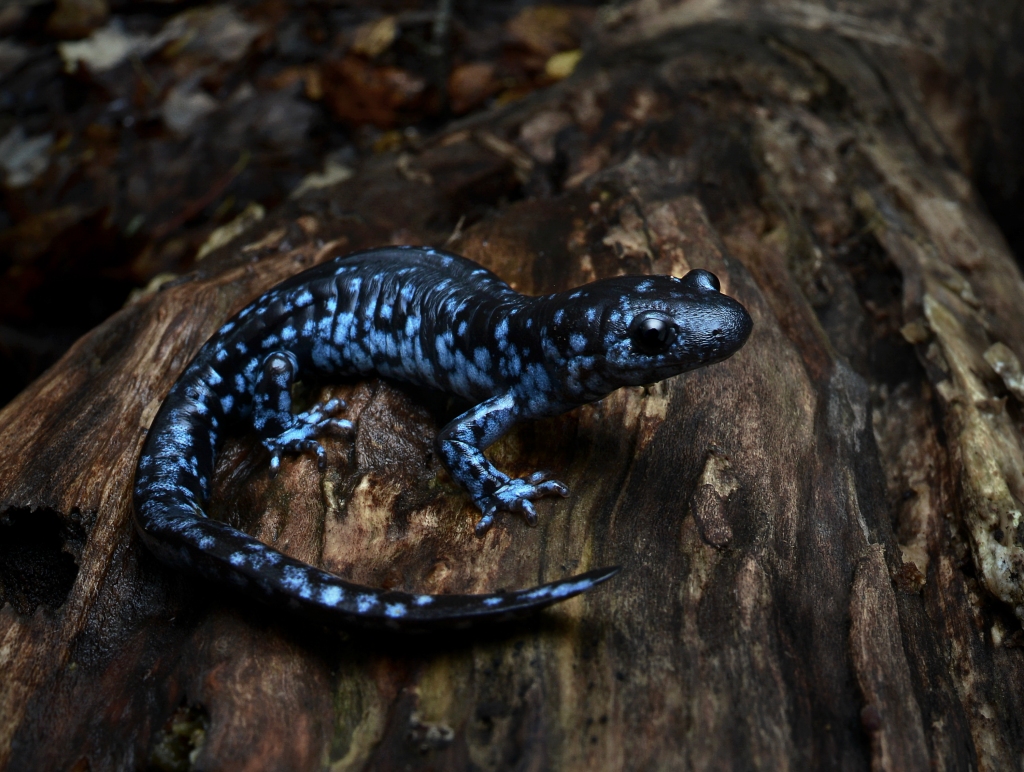
Developed areas contain more accessible food and water sources at night. White-tailed deer, raccoons and striped skunks have better survival rates in suburbia than wilderness.
“Humans have removed large predators such as bears and wolves. If you ignore our houses, we’ve created a savanna with big trees, hedgerows and maintained yards. It’s nice habitat,” Grego said.
Fear of humans also drives nocturnal behavior. Animals become significantly more nocturnal in urban areas than rural regions, according to a 2018 study. Coyotes exemplify this shift. They’re diurnal—active during the day—in remote locations but mostly nocturnal around people.
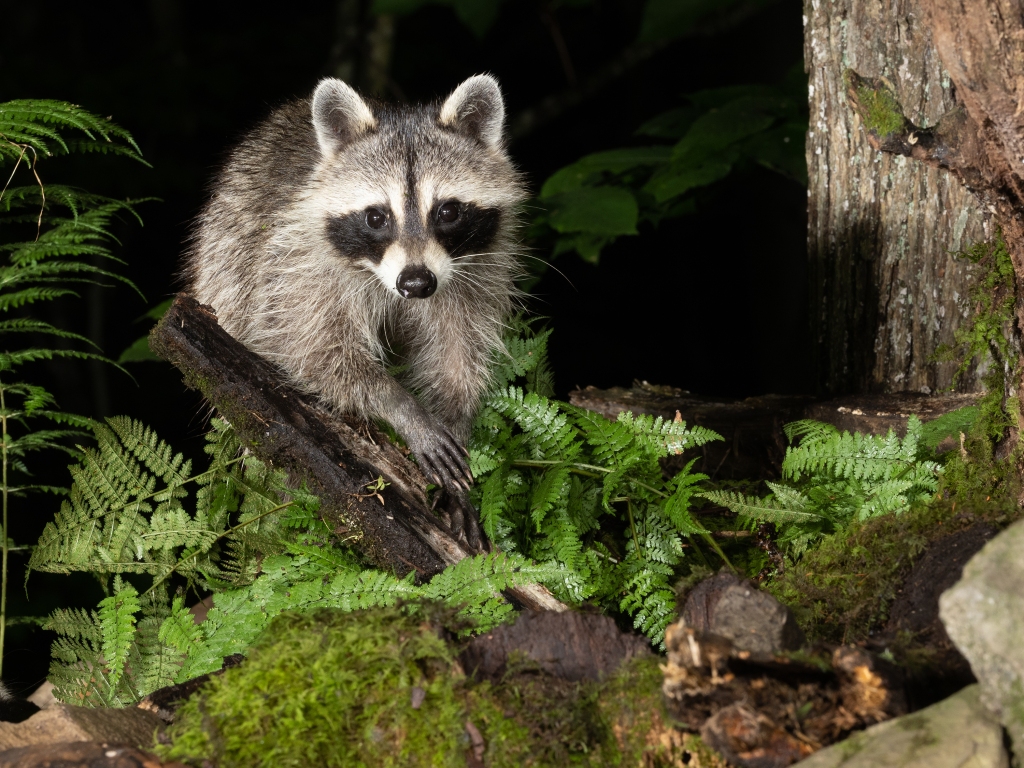
These nighttime specialists have evolved remarkable adaptations, such as enhanced vision.
An owl’s eyes can make up 5% of its bodyweight, compared to 0.02% in humans. Owls also independently control their pupils and possess five times more light-sensitive rod cells in their eyes than people.
Rods are specialized for seeing in low-light conditions.
Many nocturnal animals also have a reflective eye tissue called the tapetum lucidum. It bounces light back through the retina, creating a greenish eye-glow in the dark. Humans don’t have tapeta lucida.
Keen hearing is equally crucial.
“Raccoons and opossums have cup-shaped ears to capture sounds from prey or predators,” Grego said. Owls’ asymmetrically positioned ears help them pinpoint where sounds originate, making them deadly accurate hunters in dim places.
These nighttime specialists have evolved remarkable adaptations.
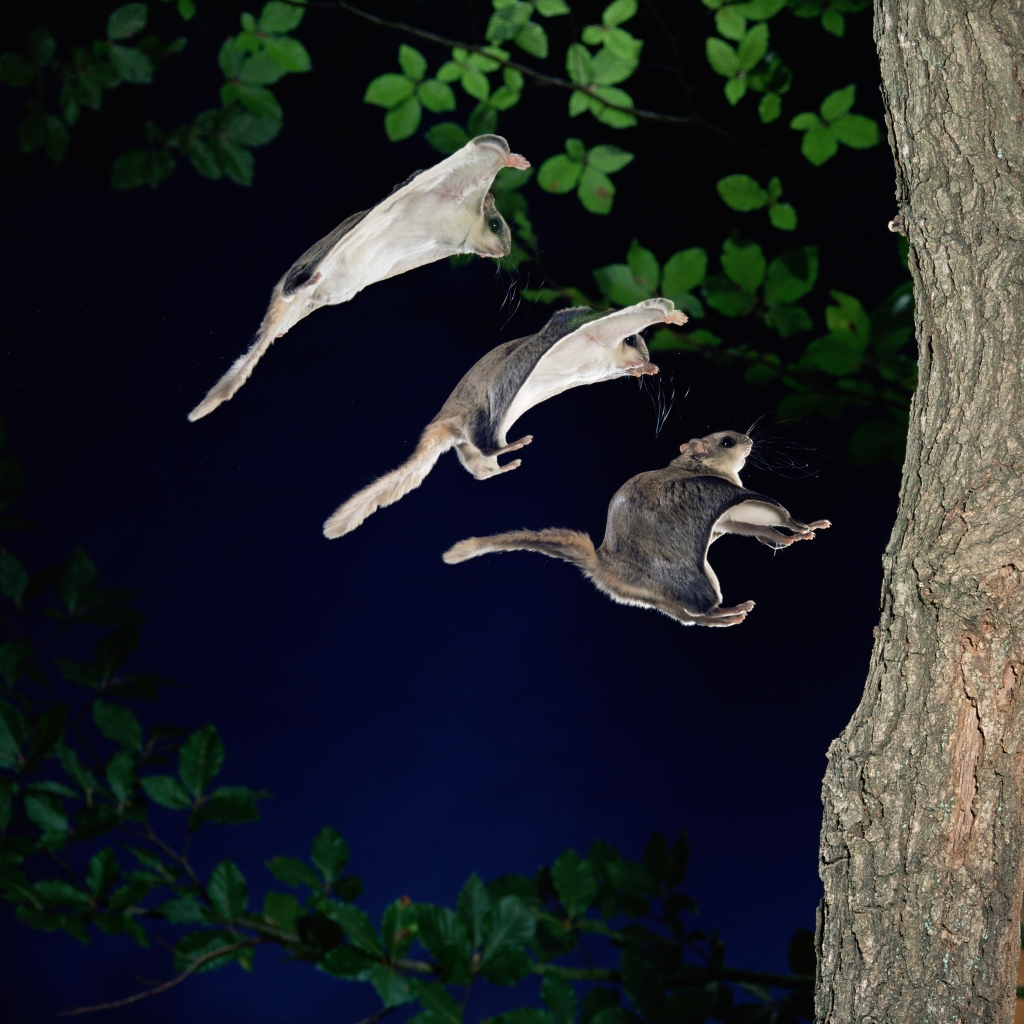
Night Gliders
One nocturnal species consistently stumps Grego’s student interns.
They’ll send him infrared images of a creature climbing trees and eating. Too big for a mouse, too small for a squirrel, the interns say.
The reveal—it’s a southern flying squirrel. These chipmunk-sized mammals live in social groups among Lake County’s treetops, nesting in grass-lined tree cavities.
“They set up lots of secondary nests as extra hiding spots,” Grego said.
Flying squirrels don’t truly fly. They glide around their 1-acre home ranges using a fold of skin called the patagium that connects their wrists and ankles.
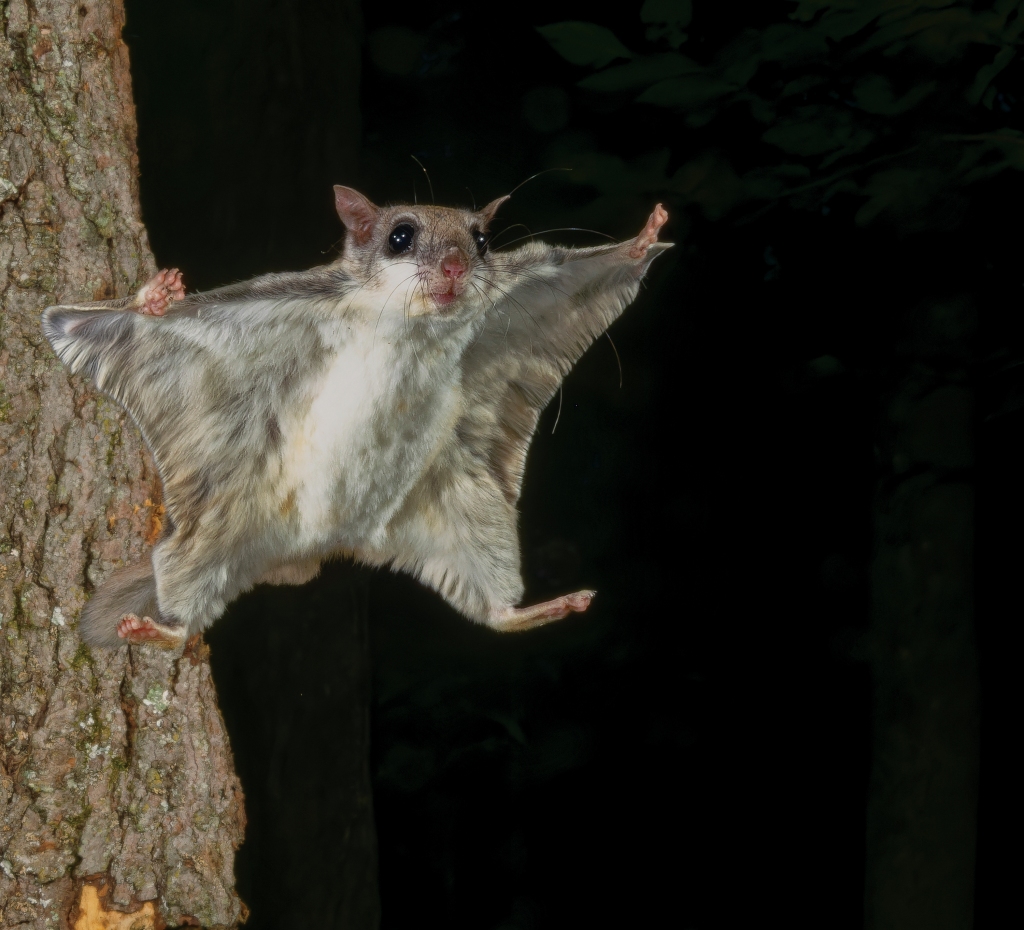
Emerging from its nest, a squirrel tilts its head, assessing the distance to a destination. It launches, catching the air with its patagium.
The squirrel flicks its tail and bends its skin, steering between branches. Just before the targeted tree, it puffs the patagium into a parachute and lands upright on the trunk. Glides of 90 feet are possible, but 20–30 feet are more common.
Despite their cuteness, “flying squirrels are North America’s most carnivorous squirrels.” They favor nuts, acorns, berries, fungi, sap—and occasionally insects, bird eggs, baby birds and carrion.
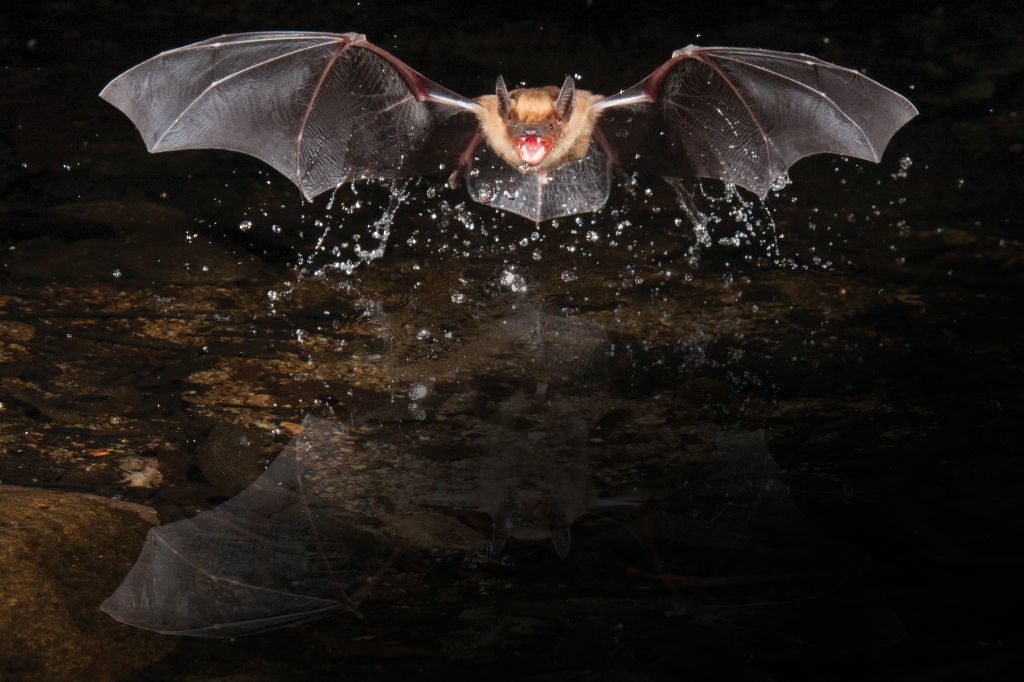
Night Flyers
About 70% of mammals worldwide are nocturnal. One group exhibits powered flight: bats.
Look at your hand. Picture your fingers lengthening and the skin between them stretching, until it’s a continuous flap of muscles, blood vessels and skin.
Over millions of years, bats evolved like this to make flight possible. Chiroptera, the scientific order containing bats, means “hand-wing.”
“A lot of people think of a bat as a mouse with wings, but it’s not,” Grego said.
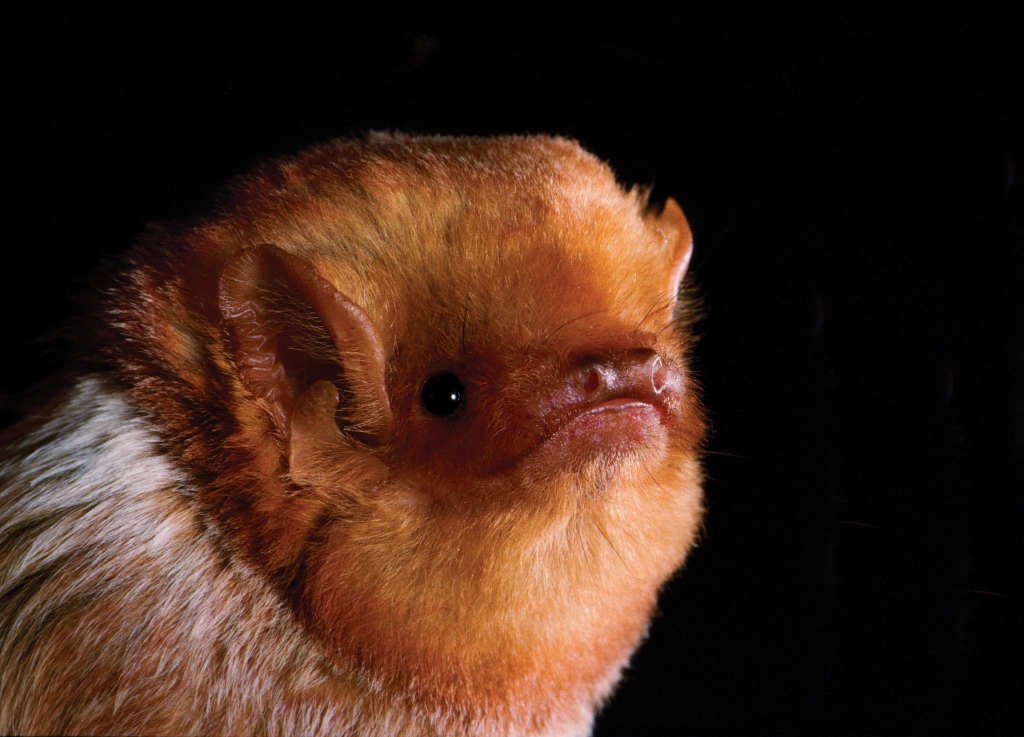
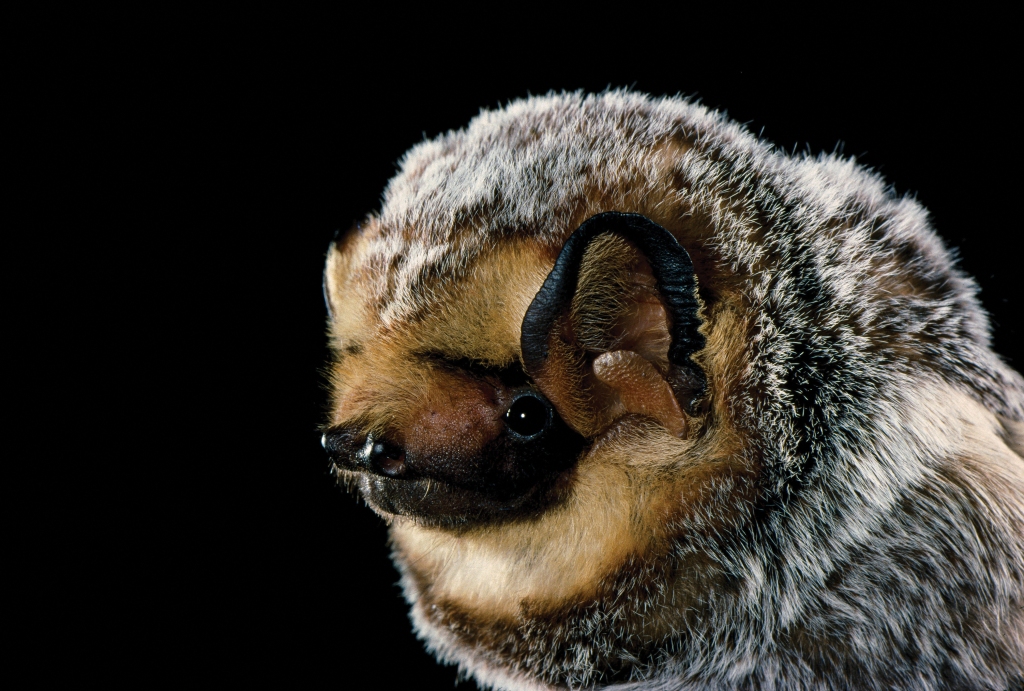
Of Illinois’ 13 native bat species, big brown bats, hoary bats and silver-haired bats are common in Lake County. Eastern red bats and evening bats are less common.
Most roost in tree cavities or buildings—not caves—and emerge nightly after sunset to feast on mosquitoes, beetles and gnats.
Bats’ pest control value is enormous. A colony of 150 big brown bats removes enough cucumber beetles to prevent millions of crop-damaging larvae from hatching each summer.
“I think folks who make their living off agriculture and all of us who eat food can appreciate that.”
Install a bat house to attract bats to your yard using guidelines at batcon.org.
You can help restore the night by flipping a switch.
Lights Out
Artificial light allows modern society to keep darkness at bay. But it disrupts nocturnal wildlife’s natural behaviors, including navigation, mating, foraging and pollination.
Migrating birds and bats that navigate by moonlight or starlight can get lost near bright cities.
Human-made light creates artificial feeding grounds where insects gather, attracting bats, birds and other predators.
When sphinx moths—which pollinate federally threatened eastern prairie fringed orchids—get drawn to lights instead of flowers, the plants they should visit won’t reproduce as well.
“Plants with strong scents, especially at night, and light-colored flowers draw nocturnal visitors,” said Restoration Ecologist Dan Sandacz, who’s planning to study these relationships in the preserves.
“Nocturnal pollinators can pollinate as much as diurnal ones.”
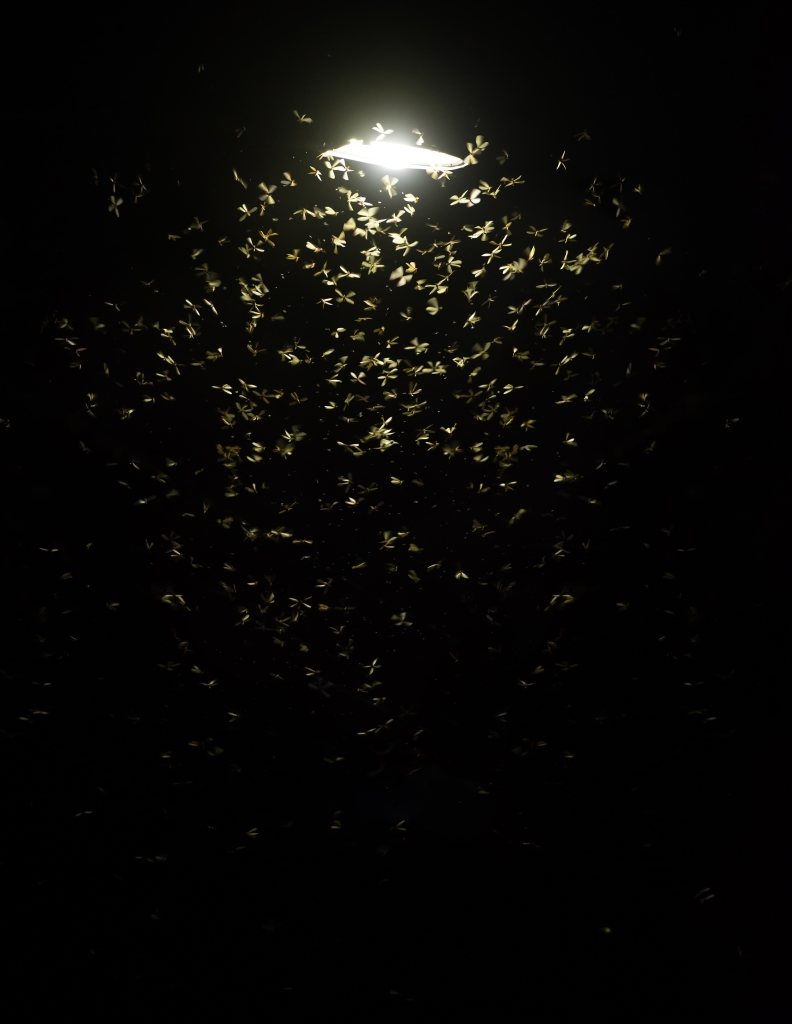
You can help restore the night by flipping a switch.
Turn off unnecessary outdoor lights, switch to amber lightbulbs and point them at the ground. Install motion detectors with short intervals.
“If a coyote walks onto your porch, the light turns on and scares it away,” said Grego. “After five or 10 minutes, the light goes off and things return to normal.”
Want to see wildlife after dark?
While the preserves close at sunset, our educators often lead after-hours hikes and paddling programs. Check LCFPD.org/calendar.
See more tips to reduce light pollution at darksky.org.
Locating Echoes
Bats hunt using echolocation: producing high-pitched calls and listening to the echoes to perceive the shape, size, distance and speed of objects.
Some people, especially children, can hear these calls unassisted.
Most adults can’t. It’s relevant for Grego, who conducts bat monitoring in the preserves during spring and summer.
Starting about 30 minutes after sundown, he walks or slowly drives through a preserve, recording vocalizations with a portable microphone and smartphone. Software identifies the species.
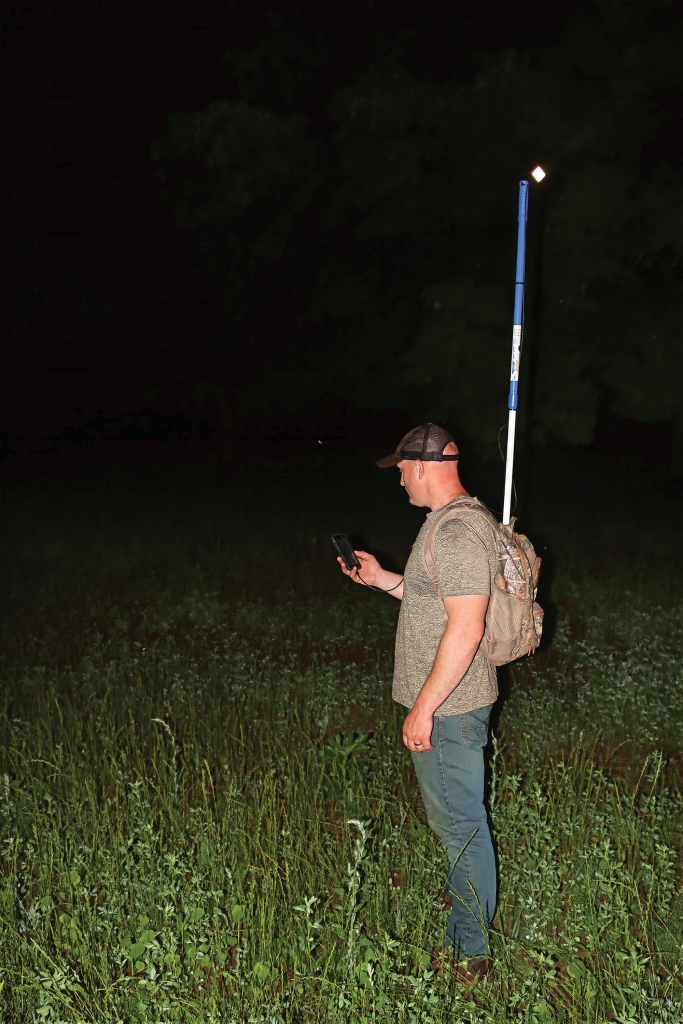
After visiting 14 preserves in 2024, Grego calculated their bat populations as 45.9% big brown bat, 24.8% hoary bat, 21.8% silver-haired bat, 5% eastern red bat and 2.6% evening bat.
The composition has changed due to white-nose syndrome, a contagious disease that interrupts hibernation and leads to starvation.
Caused by a fungus native to Europe and unintentionally introduced to the U.S., it was first observed in New York in 2006. The disease reached Illinois by 2012 and today is found in 40 states.
Northern long-eared bats are now federally endangered. Tricolored bats are trending that way. And little brown bats are sharply declining in northeastern North America.
Grego recently gained new tools to expand monitoring efforts.
Thanks to a grant from the Preservation Foundation, the charitable partner of the Forest Preserves, we purchased four stationary monitoring devices ahead of the 2025 monitoring season. They can be left in place for two weeks, recording data continuously.
Each preserve’s bat population will be assessed every eight years. By 2032, we’ll have a fuller picture of how Lake County’s flying mammals are faring.
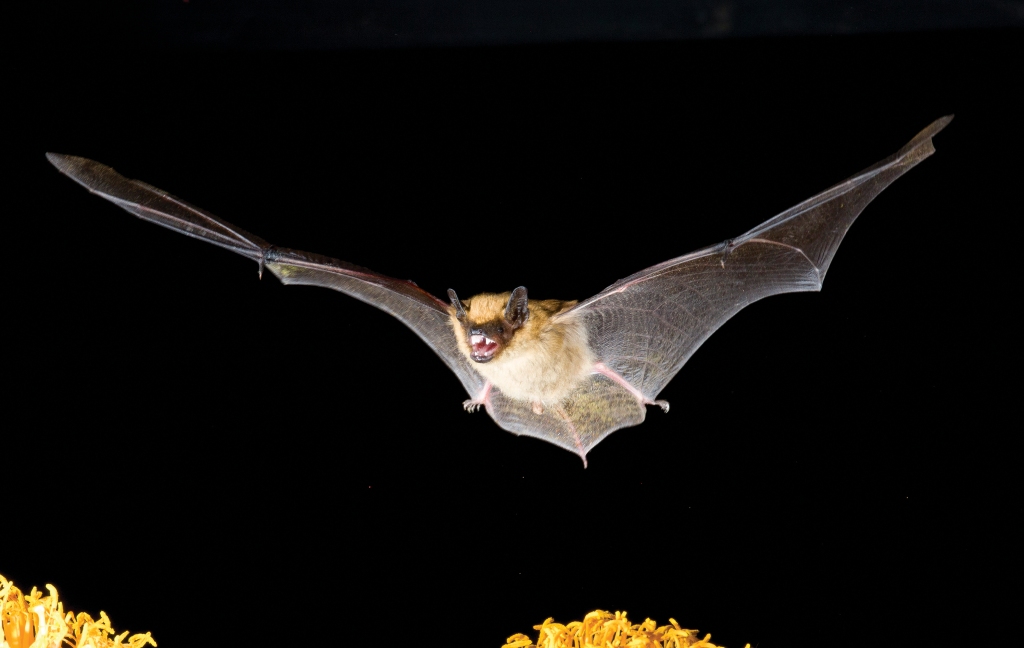
Species highlighted in this feature: big brown bat (Eptesicus fuscus) / blue-spotted salamander (Ambystoma laterale) / coyote (Canis latrans) / eastern prairie fringed orchid (Platanthera leucophaea) / eastern red bat (Lasiurus borealis) / eastern tiger salamander (Ambystoma tigrinum) / evening bat (Nycticeius humeralis) / hoary bat (Lasiurus cinereus) / little brown bat (Myotis lucifugus) / northern long-eared bat (Myotis septentrionalis) / raccoon (Procyon lotor) / silver-haired bat (Lasionycteris noctivagans) / southern flying squirrel (Glaucomys volans) / sphinx moths (Sphingidae family) / striped skunk (Mephitis mephitis) / tricolored bat (Perimyotis subflavus) / Virginia opossum (Didelphis virginiana) / white-tailed deer (Odocoileus virginianus)
Images © Joe McDonald / McDonald Wildlife Photography, Jennifer Rasmussen, Alex Roukis, Kim Taylor, Merlin Tuttle, Jim Zipp.



